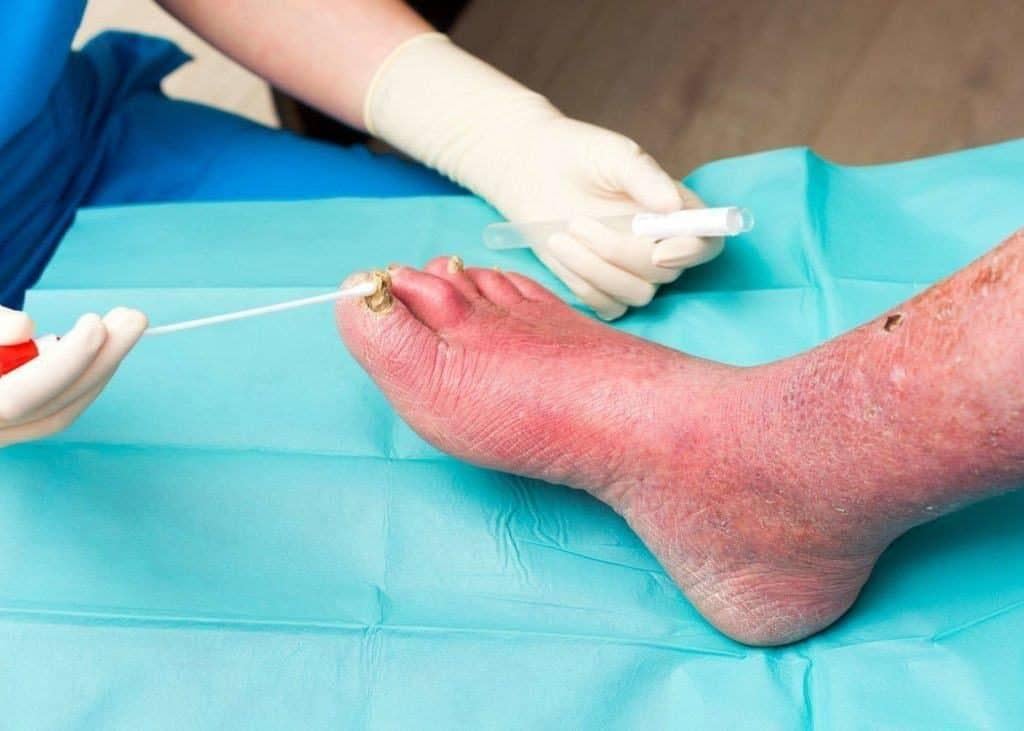Diabetic Foot: Its Symptoms and How to Prevent it
People with diabetes can be exposed to many different foot problems. Even ordinary problems can get worse and lead to serious complications. Foot problems most often occur when there is nerve damage, called neuropathy.

Although it can be painful, nerve damage in the legs because diabetes can also reduce your ability to feel pain, heat, and cold. Loss of taste often means you don't feel anything when you experience a foot injury. You can walk comfortably all day long even though on your feet there are stones or gravel that you don't feel. You can have boils and don't feel them. You may not be aware of a foot injury until the skin is damaged and becomes infected.
Nerve damage can also cause changes in your feet and toes.
What are the signs and symptoms?
Diabetic feet can cause tingling, pain (such as heat or stinging), or weakness in the legs. This can also cause loss of taste in the legs, so you can get hurt and not realize it. Poor blood flow or foot or toe changes can also cause problems.
How to overcome
What should I do?
Treatment depends on the type of foot problem. For example, some problems such as thickening of the skin on the feet may require the use of corrective shoes, while others such as minor infections can be treated with antibiotics or antifungals. Other problems may need debridement and antibiotics. Gangrene, or tissue death, is irreversible, but treatment is available to prevent gangrene (often called dry gangrene) from spread or infection (dry gangrene becomes infected and develops into wet gangrene).
Surgical removal of dead tissue is usually needed, and antibiotics are given to prevent the development of life-threatening infections in dead tissue. In cases of serious gangrene, amputation may be needed.
Other types of foot problems can be removed by choosing the right shoes, sometimes with orthotic devices, and splints or wires. For some conditions such as hammertoes, bunions, and nails do not grow; surgery may be needed to correct a severe case.
People with neuropathy need to pay more attention to their feet. The nerve to the leg is the longest nerve in the body and is most often affected by neuropathy. Loss of feeling in the legs means that a wound or injury may not be noticed and can become ulcer or infected. Circulation problems also increase the risk of foot ulcers. Smoking increases the risk of foot problems and amputation. Health care providers may be able to provide assistance to stop smoking.
Foot care for diabetics can be done by:
- Cleanse your feet every day using warm water and mild soap. Avoid soaking your feet. A soft towel can be used to dry the feet and between the toes.
- Check your feet and toes every day for cuts, abrasions, redness, swelling, calluses, or other problems. The use of a handheld mirror or floor mirror may help in checking the bottom of the foot, or someone else can help check your feet. Tell the doctor every problem is found.
- People who need foot care assistance should consider making an appointment with a foot doctor, or commonly called a podiatrist .
When should I see a doctor?
You should immediately see a doctor if:
- You see a cut on the skin of your foot, or an open wound
- The skin above part or all of the foot changes color to red, blue, pale or dark
- You see swelling on your feet where there are ulcers or injuries.
Prevention
Some diabetes problems related to the feet can be prevented by taking a precautionary step to observe and care for your feet. Keep blood sugar levels under control (in the range recommended by the doctor), and follow diet recommendations and exercise training programs. This is the best way to prevent all complications of diabetes, including foot problems. In addition to keeping your diabetes under control, you can take the following steps to take care of your feet, such as:
- Use comfortable and closed footwear at all times. Special shoes for people who experience swelling of the thumb and changes in foot shape are widely available if needed. Make sure there are no foreign objects stuck in the shoes that can hurt your feet.
- Don't walk barefoot, even at home. Make sure your feet are not burned by not walking on the asphalt road during the summer.
- Always wash your feet with warm water and dry them after washing.
- Check your feet every day for any injuries or injuries.
- Use lotions for dry areas, especially heels, but don't use lotions between fingers. Do not use scissors or razors to thin or release thickening or calluses.
- Cut the nails upright thinly, do not cut the corners shorter than other nails
- Make sure your doctor checks your feet at each examination
- Stop meorokok if you are a smoker. Smoking can increase the risk of atherosclerosis and reduced blood circulation to the legs.